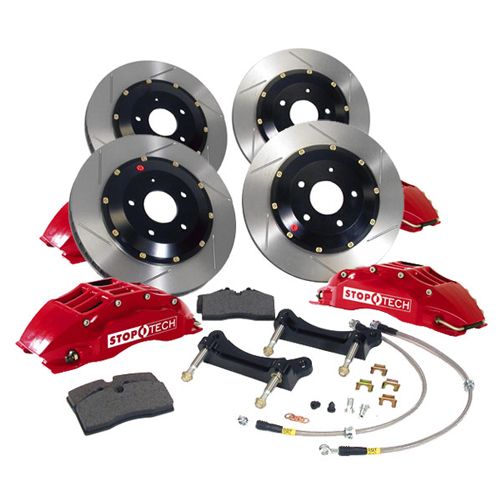Your cart is currently empty!
Disc Brake and Drum Brakes
Disc brakes and drum brakes are two common types of braking systems used in vehicles, each with its own set of characteristics and advantages. **Disc Brakes:** – Disc brakes use a rotor, typically made of cast iron or composite materials, that rotates with the wheel. – When the brake pedal is pressed, hydraulic pressure is […]
Description
Disc brakes and drum brakes are two common types of braking systems used in vehicles, each with its own set of characteristics and advantages.
**Disc Brakes:**
– Disc brakes use a rotor, typically made of cast iron or composite materials, that rotates with the wheel.
– When the brake pedal is pressed, hydraulic pressure is applied to calipers containing brake pads. These pads clamp onto the rotor, creating friction and slowing down the vehicle.
– Disc brakes offer better heat dissipation compared to drum brakes, making them more effective at dissipating heat during heavy braking, which reduces the risk of brake fade.
– They are generally easier to maintain and provide more consistent braking performance in various driving conditions.
– Disc brakes are commonly found on the front wheels of most modern vehicles and often on all four wheels in high-performance or luxury vehicles.
**Drum Brakes:**
– Drum brakes feature a cylindrical drum attached to the wheel hub. Inside the drum, brake shoes with friction material are pushed outward by hydraulic pressure when the brake pedal is pressed.
– As the brake shoes press against the inner surface of the drum, friction is created, causing the vehicle to slow down.
– Drum brakes tend to be less expensive to manufacture and are often used in the rear wheels of many vehicles.
– However, they are less effective at dissipating heat compared to disc brakes, which can lead to brake fade during prolonged or heavy braking.
– Drum brakes are generally considered to be less efficient and may require more maintenance over time compared to disc brakes.
In summary, while both disc brakes and drum brakes serve the same fundamental purpose of slowing down a vehicle, they differ in their design, performance characteristics, and maintenance requirements. The choice between disc brakes and drum brakes often depends on factors such as vehicle type, intended use, and cost considerations.

Reviews
There are no reviews yet.